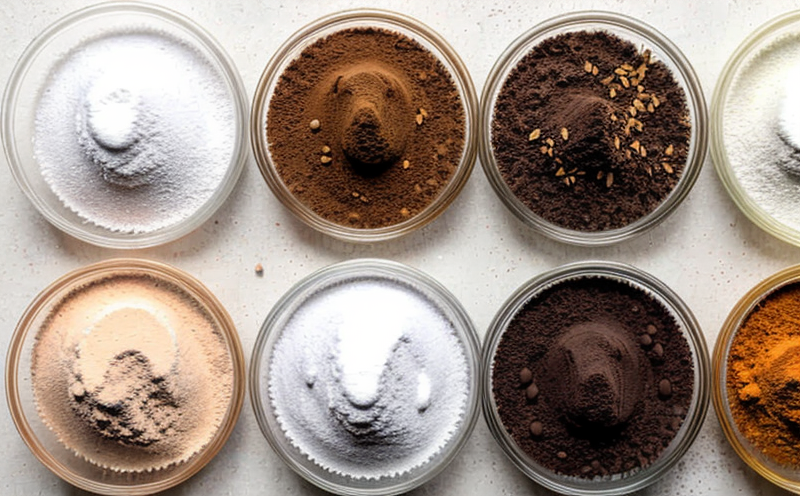AOAC 2020.07 Anthocyanin Profiling in Fruit Juices
The AOAC 2020.07 method is a standardized procedure for quantifying and profiling anthocyanins, which are natural pigments responsible for the blue, purple, and red colors found in many fruits and fruit juices. This method is particularly valuable for food & feed testing as it allows manufacturers to ensure product consistency, safety, and compliance with regulatory standards.
Anthocyanins play a crucial role in the sensory attributes of fruit products, such as flavor perception and visual appeal. The presence and profile of these compounds can significantly influence consumer preference and brand loyalty. The AOAC 2020.07 method provides detailed information on the types and concentrations of anthocyanins present in fruit juices, which is essential for quality control and product differentiation.
The test involves several steps: extraction of anthocyanins from fruit juice samples using a specific solvent, followed by quantification through high-performance liquid chromatography (HPLC) or similar techniques. The method ensures that the extracted compounds are accurately identified and quantified based on their retention times and UV-Vis absorbance spectra.
The AOAC 2020.07 method is widely recognized for its accuracy, repeatability, and reproducibility. It is compliant with international standards such as ISO and ASTM, ensuring that the test results are universally accepted across different regions and industries. This compliance is particularly important in the food & feed sector where regulatory requirements are stringent.
For quality managers, this method offers a reliable tool to monitor production processes and ensure consistency in product quality. Compliance officers can use it to verify that products meet relevant regulations and standards, thereby minimizing the risk of non-compliance issues. R&D engineers benefit from detailed insights into the chemical composition of fruit juices, which can inform formulation adjustments and innovation strategies.
The AOAC 2020.07 method also supports procurement teams by providing objective data on ingredient quality and authenticity. This ensures that suppliers meet specified standards for anthocyanin content in fruit juice ingredients. The method's precision allows for the detection of any deviations from expected values, which can be crucial for maintaining brand reputation.
In summary, the AOAC 2020.07 method is a cornerstone for food & feed testing, especially when it comes to sweeteners and colorants like anthocyanins. It provides critical information that supports quality assurance, regulatory compliance, and product differentiation in the competitive market landscape of fruit juice manufacturing.
Why Choose This Test
Selecting the AOAC 2020.07 method for anthocyanin profiling offers numerous advantages to food & feed manufacturers:
- Regulatory Compliance: Ensures adherence to international standards, reducing the risk of non-compliance.
- Quality Assurance: Provides detailed insights into product composition, enhancing overall quality control.
- Innovation Support: Offers data for formulation adjustments and new product development.
- Supply Chain Transparency: Ensures that suppliers meet specified standards for anthocyanin content.
- Data Accuracy: The method is known for its accuracy, repeatability, and reproducibility, providing reliable results.
By choosing this test, food & feed manufacturers can gain a competitive edge by ensuring consistent product quality and meeting regulatory requirements. This translates to enhanced consumer trust and satisfaction, which are vital for brand success in the market.
Competitive Advantage and Market Impact
The AOAC 2020.07 method offers significant competitive advantages in the food & feed industry:
- Differentiation: Detailed profiling of anthocyanins allows for product differentiation, enhancing brand uniqueness.
- Innovation: Continuous monitoring of ingredient composition can drive new product development and innovation.
- Consumer Trust: Consistent quality ensures that products meet high standards, fostering consumer trust.
- Supply Chain Efficiency: Reliable data on supplier performance improves supply chain efficiency and reliability.
In the competitive market landscape of fruit juice manufacturing, these advantages are crucial for maintaining and expanding market share. By leveraging the AOAC 2020.07 method, food & feed manufacturers can stay ahead of competitors by ensuring superior product quality and regulatory compliance.
Use Cases and Application Examples
The AOAC 2020.07 method has a wide range of applications in the food & feed sector:
- Quality Control: Regular monitoring to ensure consistent product quality.
- Innovation: Detailed data for developing new products and improving existing ones.
- Supply Chain Management: Ensuring that suppliers meet specified standards for anthocyanin content.
- Regulatory Compliance: Verifying compliance with international standards and regulations.
- R&D Support: Providing data for research and development activities.
For example, a leading fruit juice manufacturer uses the AOAC 2020.07 method to ensure that their products consistently meet high-quality standards. By regularly profiling anthocyanins in their fruit juices, they can detect any deviations from expected values early on, allowing for timely adjustments in the production process.
Another use case involves a company developing new fruit-based products. The AOAC 2020.07 method provides detailed insights into the chemical composition of various fruits, which helps them formulate innovative and unique product offerings. This not only enhances brand differentiation but also attracts a wider customer base.
The method is also crucial for supply chain management in food & feed manufacturing. By ensuring that suppliers meet specified standards for anthocyanin content, companies can maintain consistent quality across their products. This reliability fosters trust within the supply chain and ensures efficient operations.





